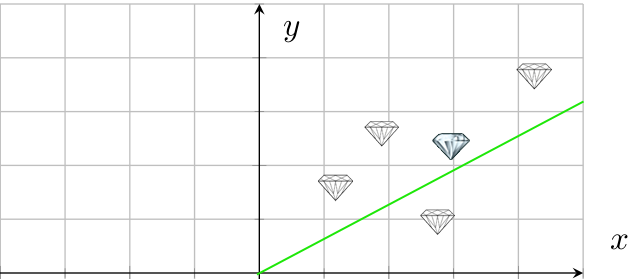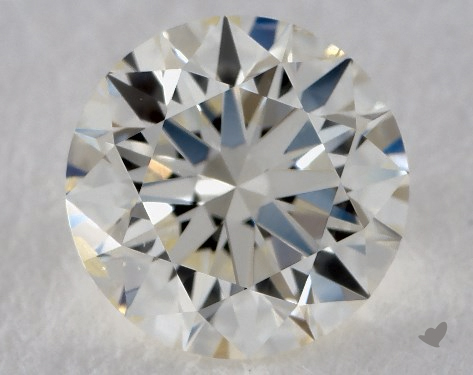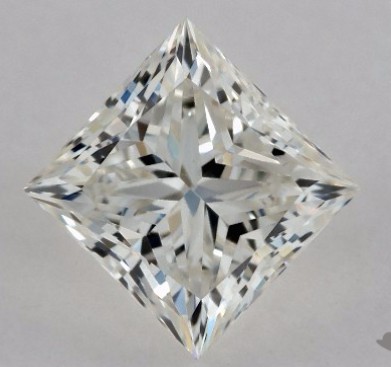The Quick and Dirty Guide
to Buying a Diamond
DataOfDiamonds is based on my research on what to look for in buying a natural diamond. It tries to educate on the basic principles that effect the price of a diamond and help you to develop an understanding of trade-offs and value. Also, feel free to skip ahead to start at the end…

Basic math, yo
General Tips
Here are the top recommendations:
It might seem obvious - but if you're shopping around online, use a private browser window (google that if you need to) AND a VPN. Even with a private tab, engagement ring ads can easily show up on your home network devices which share the same IP. Choose a VPN from this list (Start with this step)
Buy the diamond loose and have it set in a ring separately.
Call some local jewelers or just stop in and see what kind of settings they have available. See what they charge for setting a stone. Seeing a setting in person can make a huge difference. Obviously, you can get the ring online as well, and it may be a better option -- depending on the quality of your local jewelers.
Check out Gabriel and Co for some examples of quality settings. Look around online, find a company that makes enagagement ring settings and then look up to see if they have a retailer in your area. You'll get to see the ring and they can easily resize for you later if need be! Plus, usually they will clean and polish it once a year for free!
Don't go for the higher color and clarity rated stones; instead look in the less expensive tiers for "eye clean" stones. This is the focus of our guide.
You should never go into any serious debt for a ring - or any debt at all. That just doesn't make much sense, given that money problems are the main stress factor for relationships. Always set a reasonable budget and stick with it. You can get a great setting for $800-$2k and a diamond in the same range.
Terms to know
Here are the terms you should familiarize yourself with:
Inclusions - Inclusions is the name for any small flaws found inside the diamond. It's usually little black specs of carbon or sometimes different minerals. There is a whole section below on Inclusions, as it's important to understand how they fit into diamond buying.
Eye-clean - A diamond that is "eye clean" is one that may have some flaws, but that they are positioned in such a way that they aren't noticeable generally or at all.
This means the diamond will be technically rated as a lower clarity grade, which is also a large factor in how diamonds are bought and priced. Taking advantage of this is one of my main recommended buying strategies.Some diamond rings that have already been set in a placement may be hiding inclusions under the prongs of the setting. See, we're already getting our money's worth of this vocabulary.
Stone Cuts
This guide focuses on the two most popular cuts, accounting for 89% of diamonds sold.
1) Round Brilliant Cut - A round cut has been the main style of diamond shape for hundreds of years. Maximizes brilliance and fire in higher quality stones.
2) Princess Cut - Growing in popularity due to their square main angle and exceptional colors from side views, as well as being less expensive carat-to-carat vs a round brilliant.
The princess cut is also more economical from a diamond cutter's perspective, as you can usually get two cut stones from one raw diamond, due to its pyramid shape and square lines. Prices are lower than Round Brilliant due to that.
The rest of the diamond cuts are more specialized. You can read more about them in the Addendum section
4 Cs - Color and Clarity vs Size and Shine
Much the same way that the difference in sun blocking power between SPF30 and SPF50 sunblock is 1%, there is a huge "diminishing returns" aspect to some diamond stats.
Diminishing returns: Clarity and Color
These are two of the Cs you can slide on, unless you want to send your diamond to the Best in Show awards.
First a quick note on these ratings. Color is a scale from D (whitest, highest) that flows through M (yellow) all the way down into the darkest shades of brown. Clarity is a measure of inclusions in the diamond which goes from Flawless to Included, based on how visible the specks are inside the diamond at varying degrees of magnification .
They are also the biggest factors (beside carat) in the price of a stone and the most vulnerable to the law of diminishing returns. For example, the price between a D-color diamond and an F (same color group) can be more than 1/4.
Clarity has similar price differentials.
The thing is, in blind tests, most people wouldn't be able to tell the difference from a D stone to an J stone, two color groups down.
Clarity is the same - an Internally Flawless diamond vs. a VS2 (Very Slightly Included 2) isn't noticeable without 10-20x zoom.
Takeaway: Unless you're looking for diamonds as an investment, where only the top clarity and color stones are traded, there is absolutely no sense in trying to max out color and clarity - when you can instead focus on the size and shine - cut and carat - and have an immediately more noticeable effect on the stone's "quality".
Color Grades
Diamond Color Chart:
1st Colorless: D,E,F
2nd Near Colorless: G,H,I,J
3rd Slight yellowish: K,L,M
4th Very light yellow: N,O,P,Q,R,
5th Light Yellow: S,T,U,V,W,X,Y,Z
Note: Look online and compare two diamonds from the same color group. When you use an online diamond viewer from a side angle, you'll notice that even two diamonds in the same color group will have one that is noticeably more yellow than others
IMHO, it's important that you take some time and look for a stone that looks whiter/cleaner to you (the eye clean idea here). Compare D-F stones to some I-J or Ks and see if you can find some in the less expensive tiers that still look clean.
Clarity Grades
The measurements are as follows: Flawless - FL - No blemishes, at 10x magnification by an expert, inside or on surface. Internally Flawless - IFL - * just minor surface marks
Very Very Slightly Included- VVS1 & VVS2
Very, Very Slightly Included category (VVS) diamonds have minute inclusions that are difficult for a skilled grader to see under 10x magnification
Very Slightly Included - VS1, VS2
VS has visible inclusions that a recently-trained grader can see under 10x magnification
Slightly Included - SI1, SI2
Noticeable inclusions under 10x by a trained grader
Included - i1, i2,i3
Some inclusions that can be seen the naked eye
Another note on Inclusions
Unless you're carrying a jeweler's loupe around, you'll never notice the difference between an IFL and a VS2. And the price difference is huge.
However, diamonds in the VS1,VS2,SI1,SI2 will have some inclusion and, depending on the color and location of these inclusions, could end up with a diamond that has lots of black shadows in it. Sometimes this is referred to as the "fun-house mirror" effect, as one large inclusion could be bounced around eight times back to the eye. Again, most inclusions won't be very noticeable unless you're using a 10x-20x zoom.
The best way to avoid that is to compare a lot of stones using a good diamond viewer and settle on one that is eye clean to you in the clarity grade you're buying. There will be a lot of stones in the SI1 & SI2 brackets that still look great.
Size and Shine - Focusing on Carat and Cut
First, a note about carat-size. I don't have much to add here, but there is an old trick of buying slightly downsized carats for a better deal. This means buying a .94 carat instead of a 1.00 carat, because
1) Nobody in their right mind can notice a .06 difference in carat size in a diamond in its setting.
2) There is pressure for stones to be above or at 1 carat (since it's a big deal to say you have a carat stone) that can cause some bad quality cut stones to show up at or just above 1 carat.
The C that Does Matter - Cut
The diamond's cut is important to how it shines and sparkles. The basics of it are as follows.
The measurements of a diamond that most affect its shape and bling-ability are Table Width and Total Depth percentages.
The "table" being the widest topmost part of the diamond allows light to enter the diamond and the Total Depth is how far it travels down and affects how it's reflected back out to the eye.
When you know the ideal ranges for these ratios for the cut of diamond you're shopping for, you can estimate to fair degree that the diamond will in fact be extra shiny.
Round Brilliant Cut: table width 53% and 64% and a depth between 58% and 64%. rule of thumb- 60/60
Princess Cut: is a little more generous between 65% and 80%
This is a great page that explains the various codes you'll see next to diamonds while shopping in fuller detail: http://4cs.gia.edu/EN-US/diamond-clarity.htm
Choosing the Ring Setting
As stated, it's recommended to buy the diamond and the ring setting separately, but from there -- it's mostly about your partner's personal taste preferences, so I won't have much to add there.
I can tell you that platinum is expensive and white gold is a lot more affordable and has a similar color. And yellow gold means you could go a bit warmer on the diamond color.
Recommended Retailers - Where to Buy Online
If you are planning to buy online, here is a little review of the major online diamond retailers. There are also of course local places, where you get that friendly neighborhood experience and even a thriving market on Etsy.
-
James Allen - They have the best diamond viewer online bar none and their prices are competitive and low for online retailers.
I recommend JA because they have a good rep, good prices and they are the only company that seem to actually take pictures of every stone in their system. I'm sure the others will catch up, but other sites are very spotty with their actual photos of diamonds.
Blue Nile - Pros: One of the largest and longest running online diamond retailers and about as cheap as you can get. Cons: They invented a model for selling online but it's mostly based on buying site-unseen based on the diamond's certification. Most of their inventory can have pictures by request, but not a "eye clean" diamond hunters ideal setup for online browsing.
Brilliant Earth - This site focuses on extra-conflict free diamonds
- WhiteFlash - Long running website that focuses on finding diamonds that have a great cut and shine.
Recommendations Summary
- Max out on Cut over Clarity and Color
- Buy stone and setting separately
- Learn what an "eye clean" stone is (hint, diamonds are tiny and specs in diamonds are even tinier)
- Make sure Table Width/Height Ratio is good
- Buy a Princess Cut for a little more carat per dollar
Examples
- Best Color/Cost balance: J,I,H; Clarity: SI1,VS2,VS1, Cut
- For Princess cut (Table width and total depth between 65%and 80%)
- Round Brilliant Cut (Table width, Total depth around 60% (Table width between 53% and 64% and depth between 58% and 64%, if you want to get technical))
Click Here for Round Cut Search Based on Above Settings
Click Here For Princess Cut Search Based on Above Settings
- Setting: Yellow Gold - Best Cut: Round Cut- Best Color/Cost balance: K- M color , Clarity: VS1-VS2, Cut: (Same as above)
General advice would be to play around and compare a lot of stones against your price range and try to find the one that looks eye clean to you, while taking into account the color and clarity grade.
Addendum
Cuts
These ones are lower in popularity but by no means ones that should be ignored completely. There are more unique styles that might go well with a vintage or more intricate ring setting. Also more "antique" cuts like the pear shaped cut could be a better deal, if you poke around.
3) Marquise Cut A unique shape that gives the effect of a more slender finger.
4) Cushion Cut Rounded corners and larger facets that work well with larger diamonds.
5) Emerald Cut Emerald cut give a diamond more facets because of the "steps" up to the table (top level) of the stone.
6) Radiant Cut Similar to Emerald cut but with rounded "steps".
7) Pear Shaped Combination of marquise and round cuts
8) Oval Cut Popular in engagement rings and matches well with other jewelry. Most similar to Rounded Brilliant Cut
We monetize with a referral bonus from JamesAllen and BlueNile, but you can apply the principles anywhere... I just like they have 360° images of every diamond, which helps you find eye clean stones.
___________________________
